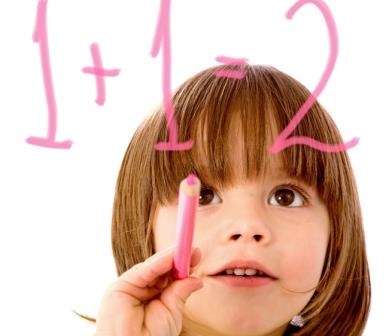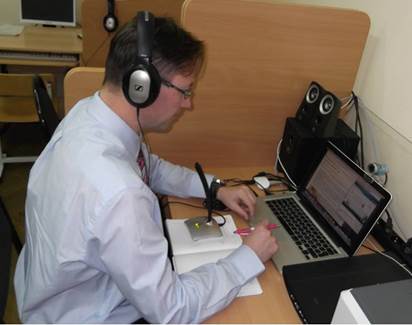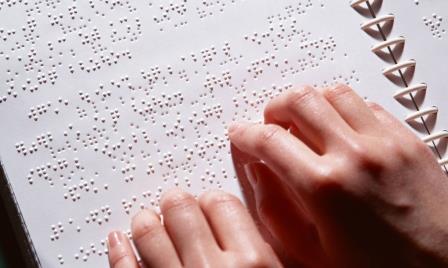INTRODUCTION
As a result of the socio-political events after WWI, the disintegration of the Austro-Hungarian monarchy, and the mutual relations between Czechs and Slovaks before 1918, the establishment of the Czechoslovak state on the principle of geographical, linguistic, and ideological proximity was only a logical outcome of the situation. With the establishment of the First Czechoslovak Republic, two different school systems merged. Since education and schooling significantly influence economic, social, and cultural life, one of the essential points of cultural policy was the effort to unify these different educational systems. Immediately, a lively pedagogical movement developed in the society, and the first great reflections appeared on the need to reform the Czechoslovak schools. The problems of the interwar school reform in Czechoslovakia are mapped in detail in the monograph by Pánková, Kasper, Kasperová, et al. [7]. The discussions that resonated in the professional teaching community in connection with the reform are captured in the later work by Kasperová [2]. In the 1920s, primarily progressive teachers formulated the school reform program. Teachers exerted considerable activism in pursuit of the grassroots reform, and in conjunction with the scientific-pedagogical elite, the issue became a publicly debated topic. The debate was open to various theoretical concepts. Still, the main actors of the reform, who directed and controlled the implementation of the school reform after 1929, were influenced mainly by American pragmatism. The American concept developed within the so-called unified internally differentiated active and social school. It is a great pity that the Ministry of Education and National Enlightenment of the First Republic did not eventually opt for a more consistent and fundamental school reform of the interwar period.
Political events in the 1930s and 1940s put an end to the ambitious reform efforts and, for five years, also interrupted the existence of Czechs and Slovaks in a common state.
After the restoration of Czechoslovakia in 1945, the reform efforts of the interwar republic could not be followed up. The development of pedagogical thinking and pedagogical discourse was oriented and framed according to the Soviet school under the influence of the official government policy. The years 1945–1948 can be characterized as an ideological struggle between, on the one hand, post-war adherents of the theoretical concepts and approaches from the time of the First Republic (proponents of the democratic school, pedagogical pluralism, orientation towards pedagogical reformism) and, on the other hand, adherents oriented towards the Soviet school model. One of the reform proposals was prepared by O. Pavlík, who emphasized the principle of the unified school and higher education for teachers (for details see Kudláčová, 2019) [5]. The aim of this proposal for the reform of the school system was to eliminate the old system of schools and create a new one, which would become a prerequisite for building a people’s democratic education. From 1945 to 1989, the Czechoslovak school system represented the model of the socialist unified school, and any attempts at major school reforms after 1945 (1948, 1953, 1959, 1968, and 1976) were based on the will of the ruling garrison rather than a scientific discussion based on the analysis and evaluation of educational results. The social situation after 1989 brought pedagogical euphoria and enthusiasm to implement the necessary reform changes to transform the school in the new conditions.
1. Theoretical background
1.1. Transformation of Czech education after 1989
In the context of complex economic, political, and social changes, the reform of education after 1989 in the Czech Republic was a logical outcome of all the circumstances. It was a complex and long-term process happening in different periods than in other developed democratic countries [14]. The main task in education between 1989 and 2002 was to establish a conceptual basis for the future direction of education in the country. The transformation also involved the legislative and curricular levels [11].
Spilková [9] points to shortcomings in the development of education of that period. The author draws attention to the absence of a comprehensive education policy. At the time, several expert school reform projects were created. The first of these is a study entitled «The Future of Education and Schooling in a Renewed Democratic Society and a Unifying Europe», written before 1993 by a team led by J. Kotásek at Charles University in Prague. At the same time, the project entitled «Freedom in Education and the Czech School» [19] was created by NEMES, the independent, interdisciplinary group. The contribution of this project to the transformation of education was mainly in describing in a very comprehensive way the objectives of the transformation of education, which were subsequently used to create primary legislative documents [11]. «Programme of Transformation of the Education System» (1992) was another material that came out of the initiative of the Ministry of Education. This report disclosed the shortcomings of the transformation of the Czech education system based on a comparative study of neighbouring countries. One of the many shortcomings of the education system of that time, persisting to the present day, is the decline in the social and economic status of teachers in our country [11].
The production of other projects emerging in the effort to transform education is evidenced by references to projects such as the IDEA group’s «Building Blocks of the IDEA Programme for Czech Education» or, as Spilková [9] notes, the study entitled «The Concept of Education in the Czech Republic» by the Union of Czech Mathematicians and Physicists.
This period is characterised by efforts to make educational policy coherent and define the goals of Czech education in the future. The unsystematic nature and the absence of a cohesive strategy of educational policy had a considerable impact on the formation of negative attitudes and distrust of the public towards schools.
A significant development in this area was a «Challenge for Ten Million» project by the Ministry of Education (1999). Domestic and foreign experts succeeded in creating a comprehensive concept of education in a democratic society. Here the vision, general goals and functions of the school were formulated [13]. The subsequent document, created in 2001, is called «White Paper: National Programme for the Development of Education in the Czech Republic». Obviously, the document was created in the context of political and economic events in the country and Europe. The White Paper is a follow-up to the document entitled «Czech Education and Europe: A Strategy for the Development of Human Resources in the Czech Republic upon Accession to the European Union» (Association, 1999). This publication analyses some of the problems of the Czech education system; it contains formulations of recommendations and priorities of the state in the view of the subsequent accession of the Czech Republic to the EU. Due to frequent changes of ministers and prime ministers, the political conditions were not favourable for implementing the strategy. Still, the positive side was that the economy was developing, the state’s prosperity was growing, and various structural funds were set up, which created favourable conditions for innovative measures within the education system [16]. In 2009, a document entitled «Analysis of the Implementation of the Objectives of the National Programme for the Development of Education in the Czech Republic (White Paper) in Pre-school, Primary and Secondary Education» was produced to provide comprehensive information on how the 2001 White Paper document was implemented. The study concluded that the objectives were formulated in a rather general way and lacked hierarchy; overall, there was a lack of «a conceptual framework that would place the individual objectives and measures in relation to each other and show how the measures would contribute to the achievement of the objectives» [16, p. 13]. It should be noted, however, that the analysis mentioned above points out similar problems within strategic documents encountered in other EU countries.
Nevertheless, the 2001 «White Paper» was a comprehensive concept for the period of five to ten years. On its basis, the curriculum school reform process was launched in 2005 with the main objective of focusing on the development of skills important for employment in a changing society.
This period saw the development of the Framework Education Programmes, which Walterová [9] argues are essential tools for genuine curricular «reform from below». It is a two-level curriculum model where the basic educational requirements of the state are specified and defined in terms of objectives, educational content, and expected outcomes. These curriculum frameworks are developed for all levels of education. The two-level curriculum model emphasises the professionalism of teachers who can work as a team to develop curriculum at the school level. The reform primarily aims to humanize schools while emphasizing the individualization of goals, i. e., each pupil achieves results at the level of their personal maximum [9]. The framework educational programmes also introduce a new division of the study material, where traditional subjects are replaced by educational areas allowing for the integration of educational content; cross-sectional themes are also included. A newly added concept is one of the key competences. A change in the overall paradigm of the school is obvious; education shifts from a transmissive approach to constructivism, where learning is based on knowledge acquired through experience (constructivism).
In 2014 and 2021, the framework educational programmes underwent revisions addressed by teams of experts and educators.
In 2020, the «White Paper» was replaced by a new conceptual document called «The Strategy for the Education Policy of the Czech Republic until 2030+». The document aims «to modernise education so that children and adults can cope in the dynamic and ever-changing world of the 21st century».
1.2. Transformation of Slovak education after 1989
Due to social changes in Central and Eastern Europe, the school system of the Slovak Republic was challenged to abandon the model of the socialist unified school of 1948–1989 and engage in the school transformation and reform in a democratic spirit. All substantial structural changes were implemented in the early 1990s (1990–1992). Still, the rapid change of governments and frequent changes of ministers of education hampered the conceptual work on the transformation processes of Slovak education.
As pointed out by Švec [9] the major school reforms since 1945 (1948, 1953, 1959, 1968, and 1976) were based on voluntaristic interventions rather than scientifically based decisions and principles. The reforms were not implemented and corrected by well-researched objective evaluation of educational outcomes. In the atmosphere of euphoria and optimism after 1989, a conceptual document called The Spirit of School was created by a team of experts led by Turek [20] in a relatively short time. It had the ambition to elaborate general principles of the future Czechoslovak education, declaring a new, democratic, and humanism-oriented school spirit and the education of a new, democratic, humanism-oriented citizen. The core ideas of this document were inspired by the international work of the OECD, UNESCO, the Council of Europe, or the alternative school movements. In the efforts to modernize, democratize and transform education, it recommended respecting principles such as the lifelong idea of education, the reduction of formalism in education, mobility, strengthening the need for self-education, respect for the learner as a subject of learning, the orientation of educational means and goals to the individuality of the learner, continuous feedback, quality control and evaluation of the effectiveness of the school system, democracy, and decentralization of education.
The Ministry of Education presented its Concept of Renewal and Further Development of Education to the pedagogical community and the wider public. The active professional discussion of this concept was summarised and assessed in the reform proposal entitled Transformation of Education in Slovakia by the Year 2000 [9].
Along with the general conceptual proposals, several partial reform proposals were developed for all levels of the education system [9; 12] Moreover, the Project for the Reform of Primary and Secondary Education focused only on two levels of the education system. However, it was based on new perspectives and starting points and was of strategic importance in terms of the reform. In April 1993, the Ministry of Education published an outline of yet another conceptual material for the development of education. The subsequent conceptual materials were derived from the Programme Declaration of the Government of the Slovak Republic for the Education and Science Section in 1994.
A series of reform conceptual proposals followed. One of the documents, entitled Constantine and presented by a team of experts led by E. Komárik, highlighted the active role of the school as an essential determinant of the economic and cultural life of society. Constantine was created with the ambition of its future transformation into a legislative document of the National Programme of Education and creating the basis of the educational policy of the state. Therefore, as suggested by Porubský et al. [3] it had a more pragmatic character, which was reflected in the formulation of the so-called European dimensions of the perspectives outlining the development of education in Slovakia. The document’s primary point of departure was the declaration of a liberal notion of society, dominated by a free individual with primary responsibility for their education, exercising the right to choose the type of education and school. It also pays attention to the teaching profession and the effort to «change the preparation of teachers and their lifelong improvement so that they are able and willing to introduce systemic changes in education» [17].
In 2002, another National Programme of Education for the following 10–15 years was adopted at the level of the Slovak government. It was elaborated by V. Rosa, I. Turek, and M. Zelina in cooperation with several expert groups [3]. Entitled Millennium, it aimed to define a new direction for developing the education system, the aims and content of education, and achieve political and social consensus for its adoption. It consisted of 12 conceptual pillars. The Millennium Project was highly ambitious; it was drafted and approved as a general document that defined numerous changes that needed to be implemented at all educational levels. In addition to the Spirit of School, Constantine, and Millennium projects, several expert commissions formed at the Ministry of Education and various ideological movements originated, e.g., the Teachers’ Forum of Slovakia and the Christian Democratic Union of Workers in Education and Science. These organizations and institutions sought to form a modern pedagogical philosophy of humanization and democratization.
Slovakia’s accession to the OECD (2000) and the EU (2004) brought new impulses to the transformation processes of education at the macro level. In December 2004, the State Pedagogical Institute published the results of PISA 2003, which showed that Slovak pupils were not achieving the expected results. This finding sparked an intense public debate on the need to reform education content. The Millennium Project introduced a new curriculum policy towards a two-level and participatory curriculum model, focusing on key competences and content and performance standards. In September 2005, the Ministry of Education presented a part of the reform with a catchphrase, «Let’s Learn to Learn – Learning for Life», announcing forthcoming changes in the content of education, oriented towards more freedom for teachers, parents, and pupils themselves [15].
The first critical legislative framework for the transformation of Slovak education was the Act on Education and Training No. 245, adopted in 2008 (School Act 245/2008 Coll.). The two-level curriculum model became one of the crucial notions; it was gradually applied in all post-communist countries to increase the autonomy of schools and thus make their work more efficient. The School Law was conceived to function for the next 15 to 20 years, which means its validity should be expiring. Nevertheless, the law is still in force today due to constant amendments.
The fourth stage of the reform efforts is represented by the Learning Slovakia project [15]. Although the Education Act is still in force, Slovak education needs the impetus for change. New concepts and reform efforts are being sought and devised. The Learning Slovakia reform concept was created by renowned Slovak experts V. Burjan, J. Vantúch, E. Višňovský, and others. Their effort was supported by many teachers from practice. In many respects, it was a continuation of the earlier projects Spirit of School, Constantine, and Millennium. Unfortunately, like many other concepts, it did not see its implementation.
The then-Minister of Education of the Slovak Republic, Martina Lubyová, stated in 2017 that the Learning Slovakia concept was unfeasible. Along with her advisory team, she presented her concept, the National Programme for the Development of Education 2018–2027. The National Programme seems to define the vision and goals of future Slovak education. However, it contains numerous formulations from all the previously mentioned projects while the new content was not introduced. The almost 60-page document remained a vision on paper. In 2020, the 21st Minister of Education sent out a message that domestic and international research, educational evaluations, and the covid pandemic point to an urgent need for changes in the content and form of education to meet the needs of the 21st century.
The document Education for the 21st Century, which outlined the planned changes, was prepared by experts and practitioners. It was based on long-term research and analyses of the education system carried out by several key actors: the Institute of Educational Policy, directly managed organisations of the Ministry of Education and Science of the Slovak Republic (National Institute for Certified Educational Measurements and National Institute for Education), the State School Inspectorate, the initiative It Makes Sense (MESA10), universities and other organisations and institutions. It also draws on recommendations from the European Commission, OECD, World Bank, and the document Learning Slovakia proposals.
The ambition of the document is to prepare a pilot verification of selected parameters and a new structure of state educational programmes in selected primary schools. The current Minister of Education in Slovakia, Branislav Gröhling, presented the aim of the reform as preparing pupils for life in the 21st century. They should be educated and able to succeed in the labor market and effectively apply the knowledge, skills, and attitudes acquired during their school education in their lives.
2. Metodology
This research study aims to present an overview of reform efforts in education after 1989 in the Czech Republic and Slovakia. We also aim to describe the development of the primary curriculum documents that have influenced the transformation of the education systems in the Czech Republic and Slovakia, analyse the essential strategic curriculum documents in the process of educational transformation in the Czech Republic and Slovakia, and describe and critically evaluate the reform efforts after 1989 in the Czech Republic and Slovakia based on comparative analysis.
We ask the following research questions: What was the transformation of the education systems in the Czech and Slovak Republics after 1989? Which primary curriculum documents impacted the transformation of the education system in both countries? How did the reform efforts in these two countries evolve after their separation?
The research sample consists of documents mapping the historical overview and development of primary curricular documents that have influenced the transformation of the education system in the Czech Republic and Slovakia from 1989 to the present. Individual conceptual documents of educational policy in the Czech Republic and Slovakia for the period 1989–2020 are also analysed.
We apply a qualitative research design, where the chosen research method is a comparative analysis of textual documents. Individual documents were subject to analysis; given the breadth of the problem, we focused primarily on conceptual anchoring. In the process of comparative analysis, we used Bereday’s model of comparative analysis [8] of four successive steps: (1) description – data discovery; (2) understanding (interpretation); (3) juxtaposition – skeleton formation (the position of individual characteristics of the compared phenomena next to each other) and (4) the actual comparison or search for causality [12].
| CZECH REPUBLIC | Document analysis (characteristics of the compared phenomena) |
| The Future of Education and Schooling in a Renewed Democratic Society and in a Unifying Europe
(1991) |
‒ emphasis on the role of school and the importance of education for society;
‒ the need for a democratic and humane education, reaching standards equivalent to those of the developed countries of Europe; ‒ analysis of the problems of Czech and European education; ‒ transformation of education is a continuous process; the focus on teacher training is essential; ‒ content and scope of the curriculum: reducing the curriculum at lower levels of schools is necessary; the problem of education is oversized curriculum and normative assessment of pupils’ results. There is a need to focus on respecting the pupils’ needs, especially in values and emotions [11] |
| Freedom in Education and the Czech School
(1991) |
‒ a document analysing the current state of education in the Czech Republic and Europe, mentioning trends in European education;
‒ the starting point of the transformation of the education system is the freedom of the individual; education serves the one who is educated, satisfying their needs (becoming competent): a new view of the situation; previously, one was educated for the benefit of the society (ideological concept); ‒ the foundations of the new education system are described; ‒ the need for reform as the beginning of the education system transformation: the basic steps of reform are mentioned; ‒ an outline of five main areas of transformation of the education system: the educational process (curriculum reform), the structure of education, the school as the educational centre of the community, autonomy and management of schools, support and retention systems [19] |
| Programme of Transformation of the Education System (1992) | ‒ the material consists of several texts, admitting the continuous nature of the transformation of the education system in the Czech Republic while claiming [11] that the opinions contained in the document should undergo public discussion |
| White Paper: National Programme for the Development of Education in the Czech Republic
(2001)
|
‒ a primary conceptual document, binding for further planning in the education sector; an open document that is critically examined and revised;
‒ it sets out the general objectives of education; ‒ the following are considered the main strategic lines: 1) Opportunity and accessibility to education for all, developing one’s abilities throughout lifelong learning. 2) Adapting education and study programs to the needs of a changing society. 3) A system of evaluation of the institutional activities: monitoring the results of institutions. 4) Developing the autonomy of schools. 5) Focusing on the support of teaching and academic staff, their status, and professional growth. 6) Decentralized management of the educational sector [6] |
| The Strategy for the Education Policy 2030+ | ‒ a strategic document determining the future direction of education development in the Czech Republic, including priorities and investments for the following ten years. It also aims to modernise education, prepare it for new challenges, and address existing problems in the Czech education system;
‒ the main aims of the document: 1) Focus the education on the acquisition of competences needed for an active civic, professional, and personal life. 2) Reduce inequalities in access to quality education and enable maximum development of the potential of children, pupils, and students; ‒ strategic trajectories: 1) Transforming the content, methods, and education assessment. 2) Equal access to quality education. 3) Supporting teaching staff. 4) Increasing professional capacity, trust, and cooperation. 5) Increasing funding and ensuring its stability [21] |
| SLOVAK REPUBLIC | Document analysis (characteristics of the compared phenomena) |
| The Spirit of School
(1990) |
‒ general principles of future Czechoslovak education;
‒ the concept of creative humanistic education, democratization and humanization of social life, democratization of the teacher-pupil relationship; ‒ the concept of lifelong education – securing the right to education for all throughout life; emphasis on an active approach to self-education; ‒ reduction of formalism in education; ‒ democracy and decentralization of education and freedom from bureaucracy and politics [20] |
| Transformation of Education in Slovakia by 2000
|
‒ based on the criticism of socialist education, where significant limits are identified in three areas: 1) Exceedingly narrow concept of education failing to focus on the individual and putting the education to use in the future. 2) The positive climate of the school is disturbed, authoritarianism and the transmission of ready-made knowledge prevail, one-way communication between teacher and pupil, no involvement of parents in the operating of schools. 3) Systemic flaws in national education [3] |
| Project for the Reform of Primary and Secondary Education
(1990) |
‒ strategic starting points and perspectives for the development of education: 1) Value orientation to humanity. 2) Democracy of public education. 3) The professional competence of pedagogical staff is of scientific nature. 4) Functionality and permanent optimization of assumptions and results of the educational system, the so-called school for life, general and vocational education for the widest sectors of the population [3] |
| Project Constantine
(1994) |
‒ the creators are educators, teachers, and parents;
‒ the main question: What should school and education system in the Slovak Republic be like? ‒ the main objectives of the programme: 1) To ensure the right to free choice of the educational path. 2) To enable a high level of citizen participation in the management of education and training issues. 3) To create legislation of the rule of law in the field of education, to create an objective and transparent system of education financing, to create education standards; ‒ based on the principle of plurality and democracy of the educational system [17] |
| Millennium(2002)
National Programme of Education in the Slovak Republic
|
‒ a follow-up on the government’s 1998 Programme Declaration;
‒ definition of the main priorities, objectives, and contents of education and training for the next 10 – 15 years: 1) Adapting the content and process of education to the needs of the learning society. 2) Creating and ensuring the system of management and quality of education in the new conditions. 3) Identifying and evaluating the quality and effectiveness of education. 4) A reversal in the quality assurance, status, and professional prospects of teachers. 5) Linking the education and labour markets; ‒ emphasis on creative-humanistic education; ‒ characteristics of changes for all levels of education [10] |
| Learning Slovakia (2017) | ‒ one of the essential starting points for the National Programme for the Development of Education 2018–2023;
‒ emphasis on lifelong learning as the key to a successful life, with educational opportunities available to every individual throughout their lifetime; ‒ personal development, permanent self-education, and developing one’s potential; ‒ education and learning oriented to each individual; ‒ formal education was an important but not the only form of meaningful learning supported; ‒ educational programmes to be continuously improved and innovated based on functional feedback and evaluation mechanisms; ‒ participation and cooperation of all actors in education; ‒ the importance of forming a system of values and attitudes that prepare pupils for life in a democratic and pluralistic society |
| Education for the 21st Century (2020) | ‒ solutions based on research data analysis;
‒ adapting the forms and content of education to the needs of the 21st century; ‒ shifting the focus of education from the transmission of knowledge to developing pupils’ competences; ‒ adaptation of educational programmes to the individual needs and capabilities of pupils; ‒ linking the content of education to real-life situations; ‒ developing complex competences instead of rote memorisation, with an increase in motivation to learn; ‒ personalisation of learning: respecting the uniqueness, pace, and interests of each pupil; ‒ themes focused on mental health and wellbeing [22] |
The data indicate that the development of conceptual documents influencing the educational transformation in the Czech and Slovak Republics shortly after the split of Czechoslovakia followed separate developments in both countries.
The shared history and the subsequent disintegration of Czechoslovakia into two independent democratic republics meant that each state developed its own legislative and conceptual anchoring of the education system after the 1993 split. The closeness of the two states in their conception of education is understandable since the development of the education sector was that of one country until the 1993 separation. In this development phase, the main concern was the removal of old ideologies and the attempt to elaborate the guiding principles of education. The efforts of this period were marked by an understanding of what needed to be removed from the field of education; however, the goals and strategies to succeed were not yet fully specified. After the split of Czechoslovakia into two independent states, efforts to conceptualize education began to emerge. In the initial phase, the Czech programme documents focus on explaining the importance of education for everyone, the necessity of individual freedom, the satisfaction of the individual’s need to be competent, and to find a place in society. Both countries placed great emphasis on lifelong learning. In Slovakia, moreover, many programme studies were written in an attempt to draw up proposals for the various levels of schools.
In the initial phase of education transformation in the Czech Republic, the programme documents issued include the European context and the current level of education systems in developed democratic countries. The common feature of both education systems is democracy and the emphasis on humanity.
The first successful results in curriculum reforms appeared at approximately the same time in both countries: in the Czech Republic in 2001, in Slovakia in 2002. A two-level model of participatory curriculum emerged at the state and school levels. Shortly after, the differences appeared in curriculum reform and its implementation. In the Czech Republic, the development of the framework curricula took place in several stages (specifically in 2001, 2002, 2003), which were gradually discussed and modified. The final form, which was subsequently implemented in schools, was created in 2004. The Framework Education Programme is an open document subject to evaluation; it is innovated and revised according to the needs of the changing Czech society. Currently (2022), revisions of the national education programmes are underway. They are linked to the strategic document The Strategy of the Education Policy 2030+, which aims to modernise education and actively address existing problems in the education system.
In Slovakia, the development of the national curriculum and its implementation was not very successful. Thus, in 2007, the «Curriculum Council» was established to ensure the coordination of curriculum reform. However, after much effort, the Council did not gain sufficient legislative support. The frequent changes of leading political parties and their inconsistency also played a role. In the context of such development, the Education Act was adopted by the government in 2008. Kosová and Porubský [3] assess the law as unsystematic and non-conceptual, with state education programmes hastily created without much-needed discussion. Great support for the Slovak education system grew from its teachers who have taken up the curriculum reform. In Slovakia, we can talk about the reform from below. However, it needs to be stressed that the national Millennium Programme is a progressive document which defines the main priorities, objectives, and contents of education. Through amendments to the Education Act No 245/2008, some elements of the Millennium have been implemented directly into law.
After the post-revolutionary euphoria, at least four comprehensive education reform projects were created in Slovakia: The Spirit of School, Constantine, Millennium, and Learning Slovakia. None of them were consistently implemented in their entirety, even if a few functional elements were partially implemented. It remains to be hoped that the aim of the latest forthcoming reform, Education for the 21st Century, in which parents, in addition to teachers, school principals, and professionals are invited, will be successful and reach a consensus of all stakeholders.
Conclusion
Appropriate conditions must be created for equal education for all. Education must contribute to innovation, creative experimentation, and entrepreneurship. It also has to promote the acquisition of attitudes and values that build mutual respect of all education actors and an appropriate autonomy of learners; it must foster a sense of social responsibility, pro-social competencies, and a sense of the need for lifelong learning as a tool for a better and more meaningful life. Education must enable complex development and the fulfilment of individual personal goals with regard to the needs of society, the promotion of social cohesion, and economic prosperity. Every person must have sufficient opportunities and incentives to develop their potential in a lifelong learning process, and lifelong learning opportunities must be available to every individual.
In conclusion, no reform effort will be successful unless based on a broad professional and public debate. The reform needs to be accepted primarily by the teaching professionals, and it must not remain only in the realm of regulations or implementation by the state authorities. Successful reform is based on a discussion and a consensus on the efforts of teachers, the professional educational community, parents, and politicians. Reform proposals should reflect domestic school traditions and local conditions while accepting foreign influences and workable approaches. Thus, the success of school reform requires the interplay of several factors. We are hopeful that the discussions currently underway in both Czech and Slovak society consider this long-term, systematic cooperation, and support.
The further development of the education systems of the two countries will be decided by political and economic factors of the countries concerned.
References
- Greger D. Srovnávací pedagogika : proměny a výzvy. Praha : Charles University, 2016.
- Kasperová D. Československá obec učitelská v kontextu reformy vzdělávaní učitelů (ŠVSP) a reformy školy. Praha : Academia, 2018.
- Kosová B., Porubský Š. Transformačné premeny slovenského školství po roku 1989. Banská Bystrica : PdF Univerzity Mateja Bela v Banskej Bystrici, 2011.
- Kosová B., Porubský Š. Educational Transformation in Slovakia: The Ongoing Search for a Solution. In: Orbis scholae. 2007. Vol. 1 (2). P. 109–131.
- Kudláčová B. (ed.). Pedagogické myslenie, školstvo a vzdelávanie na Slovensku v rokoch 1945‒1989. Trnava : Typi Universitatis Tyrnaviensis, 2019.
- Ministry of Education, Youth and Sports of the Czech Republic (MoYES). Bílá kniha: Národní program rozvoje vzdělávání v České republicem. Praha : Ústav pro informace ve vzdělávání – nakladatelství Tauris, 2001.
- Pánková M., Kasper T., Kasperová D. a kol. Medziváleční školská reforma v Československu. Praha : Academia a Národné pedagogické muzeum a knihovna J. A Komenského, 2015.
- Rabušicová M., Záleská K. Metodologické otázky srovnávací pedagogiky: podněty pro koncipování komparativních studií. In: Pedagogická orientace. 2016. Vol. 3 (26). P. 346–378.
- Spilková, V. et al. Současné proměny vzdělávání učitelů. Brno : Paido, 2004.
- Švec Š. Strategické zásady transformácie národnej sústavy vzdelávania. In: Transformácia školy v podmienkach pluralitnej spoločnosti. Bratislava : UK, 2000.
- Tupý J. Tvorba kurikulárních dokumentů v České republice: historicko-analytický pohled na přípravu kurikulárních dokumentů pro základní vzdělávání v letech 1989–2017. Brno : Masarykova univerzita, 2018.
- Vlček P. Srovnávací výzkum v pedagogice: některé úvahy o metodologii problémového přístupu. In: Pedagogická orientace. 2015. Vol. 3 (25). P. 394–412.
- Walterová E. Funkce školy a školního. In Průcha, J. (ed.). In: Pedagogická encyklopedie. Praha : Portál, 2009. P. 112‒116.
- Walterová E., Černý K., Greger D., Chvál M. Školství – věc (ne)veřejná? Názory veřejnosti na školu a vzdělávání. Praha : Karolinum, 2010.
- Zelina M. Reformy a smerovanie školství. In: PEDAGOGIKA.SK. 2021. Vol. 3 (12). P. 115–122.
- Ministry of Education, Youth and Sports of the Czech Republic (MoYES). Analýza naplnění cílů Národního programu rozvoje vzdělávání v České republice (Bílé knihy) v oblasti předškolního, základního a středního vzdělávání. 2009 [Electronic resource]. Electron. dan. URL: https://www.msmt.cz/vzdelavani/skolstvi-v-cr/bila-kniha-narodni-program-rozvoje-vzdelani-v-cr (date of access: 15.02.2022).
- Ministerstvo školstva a vedy Slovenskej republiky. Projekt Konštantín národný program výchovy a vzdelávania. Bratislava, 1994 [Electronic resource]. Electron. dan. URL: http://www.skvelarodina.sk/konstantin/ (date of access: 15.02.2022).
- Národný program rozvoja výchovy a vzdelávania 2018–2027. Kvalitné a dostupné vzdelanie pre Slovensko [Electronic resource]. Electron. dan. URL: https://www.minedu.sk/data/att/13288.pdf (date of access: 21.02.2022).
- NEMES Nezávislá mezioborová skupina. Svoboda ve vzdělání a česká škola: Návrh projektu změny vzdělávacího systému v České republice. Praha, 1991 [Electronic resource]. Electron. dan. URL: https://skav.cz/wp-content/uploads/2013/12/NEMES.pdf (date of access: 13.02.2022).
- Turek I. et al. Duch školy: Návrh správy expertnej skupiny Ministerstva školstva, mládeže a telesnej výchovy Slovenskej republiky. 1993. In: Pedagogika, časopis pro vedy o vzdělávání a víchové, ročník XLIII. 1993. Č. 2 [Electronic resource]. Electron. dan. URL: http://webcache.googleusercontent.com/search?q=cache:hCj- (date of access: 13.02.2022).
- Strategie vzdělávací politiky České republiky do roku 2030 +. 2020. MoYES [Electronic resource]. Electron. dan. URL: https://www.msmt.cz/uploads/Brozura_S2030_online_CZ.pdf (date of access: 10.02.2022).
- Vzdelavanie pre 21 storočie [Electronic resource]. Electron. dan. URL: https://vzdelavanie21.sk/ (date of access: 10.02.2022).













